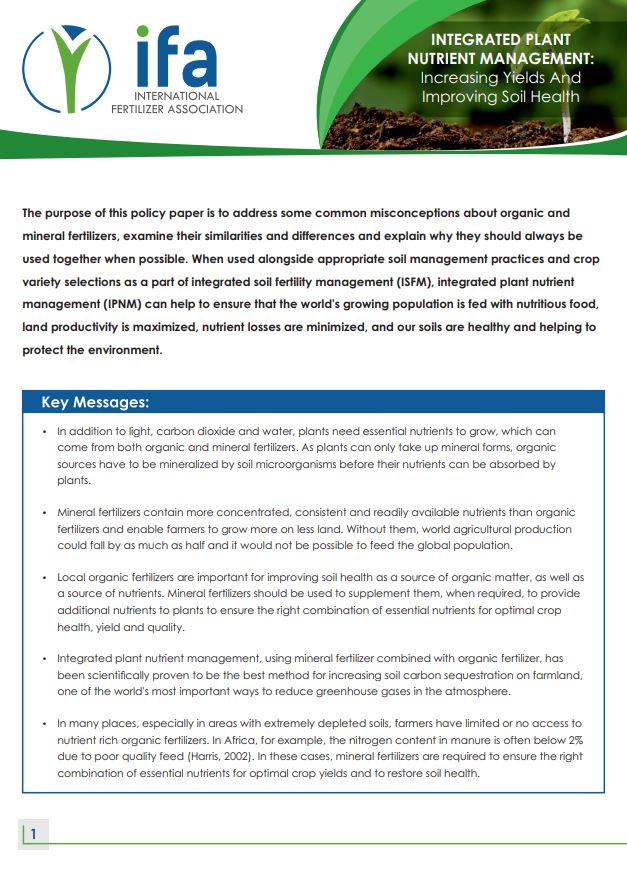Soil Health
How Fertilizers Help Protect
and Capture Soil Organic Carbon
Soil Organic Carbon (SOC) found in the living matter in soils acts as a sink that traps and stores CO2 – a major contributor to global warming.
By increasing crop yields and productivity on available arable land, fertilizers help protect carbon-rich forests, peatlands, wetlands and grasslands by minimizing land use changes.
Increased productivity through fertilizer use has spared 1 billion hectares of virgin land from cultivation between 1961 and 2005 and saved the equivalent of 317 – 590 billion tonnes of CO2 emissions (the same as total global pre-1800 CO2 emission levels)3.
Soil could store 1.85 billion more tonnes of carbon
With better management, farmland soil could also store up to an extra 1.85 billion tonnes of carbon each year (7 billion tonnes of CO2): around the same amount of CO2 emitted every year by the global transport sector4.
The best way to capture more carbon on farmland is to use fertilizers to optimize plant growth and yields and leave crop residues in the field after harvest.
For every 2 – 3 tonnes of carbon stored above ground in plants,
1 or more tonnes of carbon are generally stored below ground in the roots and root exudates.
Combining mineral and organic fertilizers is the most effective way to increase SOC on arable land. Studies have found this can accumulate up to 2 tonnes of carbon per hectare in a single year5.


